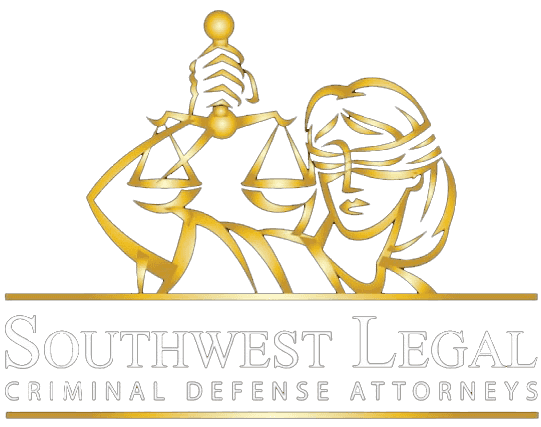California Penal Code Section 1170 governs felony sentencing and is a central part of the state’s determinate sentencing structure. It outlines how long a person convicted of a felony may be sentenced, where that sentence is served, and what alternatives or modifications may be available over time. If you or a loved one is facing felony charges, understanding this statute is critical to knowing your rights, sentencing possibilities, and opportunities for reduced penalties or resentencing.
The Triad Sentencing Structure
Under Penal Code 1170, most felony offenses are subject to three possible sentencing terms: the lower, middle, and upper terms. Judges have the discretion to impose one of these based on the circumstances of the case, including aggravating and mitigating factors.
-
Lower term: The shortest sentence allowed by law for a particular offense.
-
Middle term: The standard or default term.
-
Upper term: The longest sentence permissible under the statute.
The judge will choose a sentence based on the specific facts of the case, any criminal history, the impact on victims, and any mitigating or aggravating factors.
Determinate vs. Indeterminate Sentencing
California’s felony sentencing system generally uses determinate sentencing, meaning the offender serves a fixed term (e.g., 2, 3, or 4 years). However, certain serious or violent felonies still fall under indeterminate sentencing, such as “15 years to life.” In these cases, the offender’s release is determined by the parole board, not a fixed calendar date.
County Jail Sentencing Under Penal Code 1170(h)
The Public Safety Realignment Act (AB 109), passed in 2011, significantly changed how many felonies are sentenced. Under Section 1170(h), individuals convicted of certain non-violent, non-serious felonies may serve their sentence in county jail rather than state prison.
Section 1170(h) also allows for:
-
Full custody in county jail
-
A split sentence, where part of the term is served in custody and the remainder under mandatory supervision in the community
-
Alternative sentencing, such as electronic monitoring or work release
Eligibility excludes offenses that involve serious or violent crimes, certain sex offenses, or individuals with prior serious felony convictions.
Split Sentencing and Mandatory Supervision
Split sentencing is a major benefit under 1170(h). Courts can impose a term where the individual serves a portion in county jail and the remainder under supervised release. This approach supports rehabilitation while still holding offenders accountable.
If supervision terms are violated, the individual may be required to return to custody.
Alternative Sentencing Options
Penal Code 1170 supports various alternatives to incarceration for qualifying individuals. These may include:
-
Felony probation
-
Drug diversion programs
-
Deferred entry of judgment
-
Community service
-
Restorative justice options
These alternatives are typically granted to non-violent offenders with minimal criminal history and a demonstrated ability to rehabilitate.
Resentencing Under Penal Code 1170(d)
Section 1170(d) allows the court to recall and resentence an individual if:
-
The California Department of Corrections and Rehabilitation (CDCR) recommends it
-
The sentencing court identifies new mitigating information
-
There’s a change in the law that affects the sentence
Recent legislation, including AB 1812 and SB 483, has expanded eligibility and procedures for recall and resentencing. This opens opportunities for individuals who have made substantial rehabilitative progress or were sentenced under outdated laws.
Wobblers and Felony Reduction
Many crimes in California are classified as “wobblers,” meaning they can be charged either as misdemeanors or felonies. If a wobbler is initially charged as a felony, it may later be reduced to a misdemeanor under Penal Code 17(b) following successful completion of probation.
Note: Felonies sentenced under Penal Code 1170(h) are considered felony sentences for most legal purposes, even if they are served in a county jail. Therefore, not all convictions are eligible for this type of reduction.
Proposition 47 and Penal Code 1170.18
Proposition 47, passed in 2014, reclassified several non-violent drug and theft-related felonies as misdemeanors. Penal Code 1170.18 allows individuals previously convicted of these reclassified felonies to petition for resentencing.
While this law offers significant relief, it does not restore firearm rights and may still carry certain limitations.
Sentencing Enhancements and Penal Code 1170.1
Many felony convictions include sentencing enhancements, which add time to the base term. Enhancements may apply for:
-
Use of a weapon
-
Causing great bodily injury
-
Gang involvement
-
Prior convictions
Section 1170.1 outlines how these enhancements are applied in conjunction with the primary offense.
Sentencing Process Overview
The process typically includes:
-
The probation officer’s pre-sentencing report (including recommended term)
-
Consideration of aggravating/mitigating factors
-
The court’s selection of the appropriate term under the triad
-
Potential application of enhancements
-
Determination of eligibility for probation, alternative sentencing, or jail vs. prison
A knowledgeable defense attorney can make a substantial impact on how this process unfolds and whether alternative or reduced sentencing is possible.
Post-Sentencing Relief Options
After a sentence has been imposed, there are several legal avenues for relief:
-
Reduction of a felony to a misdemeanor under Penal Code 17(b)
-
Resentencing under Penal Code 1170(d)
-
Reclassification of certain convictions under Proposition 47
-
Petitioning for clemency or a Certificate of Rehabilitation
Each option depends on specific eligibility criteria, and legal advice is essential to pursue them effectively.
Legal Updates Affecting Penal Code 1170
Several laws and reforms have significantly changed how Penal Code 1170 is applied:
-
AB 109 (2011): Shifted many sentences from state prison to county jail
-
AB 1812 (2018): Allowed resentencing based on rehabilitation
-
Proposition 47 (2014): Reduced certain felonies to misdemeanors
-
SB 483 (2022): Eliminated certain sentencing enhancements and mandated resentencing for affected individuals
California’s sentencing laws are constantly evolving. Having current, strategic legal representation is critical to taking advantage of favorable changes.
Get Help from an Experienced California Defense Firm
Understanding Penal Code 1170 and how it applies to your case is essential—but navigating it without professional guidance can be overwhelming. Whether you’re facing charges, seeking a reduction, or exploring resentencing options, the right legal team can make all the difference.
Contact us today for a confidential consultation. Our experienced California criminal defense attorneys are here to protect your rights, reduce your exposure, and fight for the best possible outcome in your case. Call Southwest Legal Now – The Advice You Need, The Defense You Deserve.





